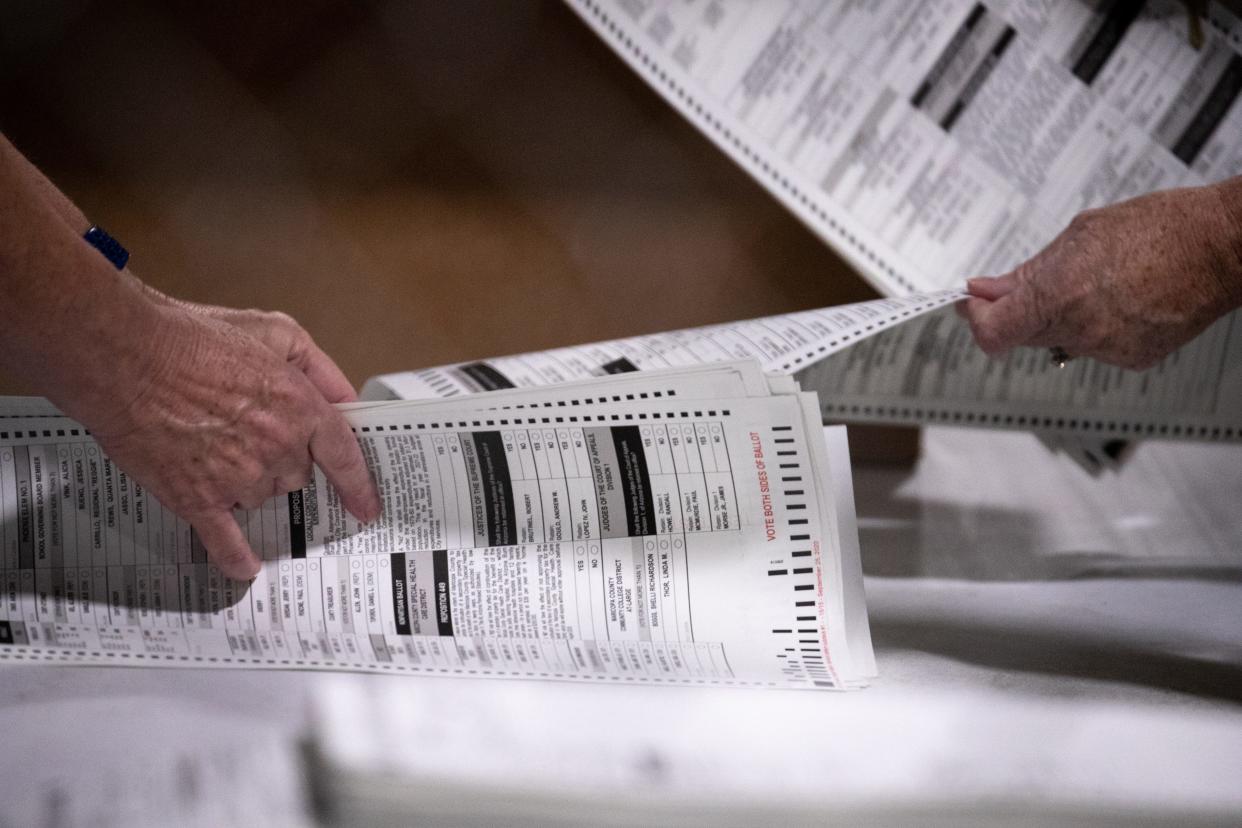All a hand count does is add time, cost and chaos to Arizona elections

Fear of technology is like any other phobia: grounded in reality, but expressed in delusions and conspiracies.
Cochise County and Arizona Republican candidates for governor and secretary of state have joined a chorus advocating for hand counting ballots to quell doubts about the security of election technology.
Hand counting ballots is not the answer.
First, we should remember that the first use of mechanical vote-casting machines came about because hand counting was so prone to manipulation and fraud. It’s also not as simple as just taking ballots out of the box and … counting.
It’s a long, cumbersome process that might be feasible for a small jurisdiction with a limited number of contests, but a completely different story for larger jurisdictions with multiple contests on the same ballot.
Research is clear: Hand counting is less accurate
We can look at well-established research out of Wisconsin to understand that hand counting ballots is the most erroneous way to tabulate races. In fact, research out of New Hampshire as far back as 2000 tells us that machine counting of ballots is an improvement on hand counting of ballots.
As it turns out, humans are particularly bad at the tedious task of compiling votes, especially in multiple races and especially when they have already worked 12-plus hour shifts, with many more hours to go.
In Cochise County: Officials say they're prepared to hand count results
Unsurprisingly, people benefit when they have access to a calculator that goes past 10 fingers and 10 toes. It should not come as a surprise to us that a computer is more accurate than a human in performing long, tedious, repetitive tasks – particularly in an environment as demanding as election night.
To understand why hand counting ballots is a logistical and financial nightmare for jurisdictions, it’s important to understand the actual process.
Why so slow? Counting must follow a process
Working with the local election office, the major political parties select pools of potential counters, who are assigned in teams of two – from both parties – to begin separating ballots into stacks (typically in batches of 100 to 1,000).
If you come across a ballot that has a stray mark, a race that was not voted, more than one selection made for a contest, or no selections made at all, it must be stacked separately for adjudication.
Working together, one member from the team calls out the race, while the other calls out the vote for that contest and keeps a manual tally. Then, they switch roles to check each other’s work.
Our institute's tech team understands that a high-speed scanner can process up to 75 ballots per minute for a ballot having about 20 questions. Let's assume the 10 questions ballot and assume some latency of 25% so that means a scanning machine is processing 112 ballots per minute or 6,700 ballots per hour.
It would take 223 hours of human time to process that same lot of ballots. To maintain the pace of a counting machine you would need 223 people working at 100% accuracy and efficiency.
Those who insist on hand-tallied results know exactly what they are asking for – the most error-ridden methods for counting ballots.
Ballot machines aren't evil. They're simply a tool
Why would anyone ask for methods that research shows are bad for voters and are more prone to errors? The answer is it serves their purposes. The real reason to push for hand tabulating ballots is the opportunity for delay, more chaos, more questions and more instability for democracy.
In order to regain trust in the democratic process and the outcomes of elections, we should not simply ignore those who are raising concerns about the security of our elections.
Let’s assume that most voters want timely results that are accurately accumulated as election night progresses into the days following the election, and that includes the votes of our military and overseas voters.
We must find a solution that everyone can agree on – that rapid, accurate and trustworthy vote counting requires both machines and people.
Machine counts are necessary, but not sufficient. The process requires humans counting to cross-check. This can be done by selecting random samples of ballots, and hand counting the selected ballots to determine if the machine counts had any errors that could yield an incorrect result.
In fact, this is what’s required by Arizona law.
Granted, there are always technology issues such as glitches, malfunctions and even claims of compromise that should be taken into consideration.
But technology is not the enemy. It’s a tool. We use it to fight disease, create other amazing tools, send us into space (and back), and yes, in combination with humans, it protects our elections.
Dana DeBeauvoir served as Travis County Clerk in Austin, Texas, and conducted elections for more than 100 jurisdictions over 36 years. She is an incoming member of the board of directors of the OSET Institute, a nonpartisan, nonprofit election technology research, development and education organization. Genya Coulter is a senior director of stakeholder relations at the OSET Institute. Reach them at dana@osetinstitute.org and genya@osetinstitute.org.
This article originally appeared on Arizona Republic: Hand count only adds time, cost and inaccuracy to election results

